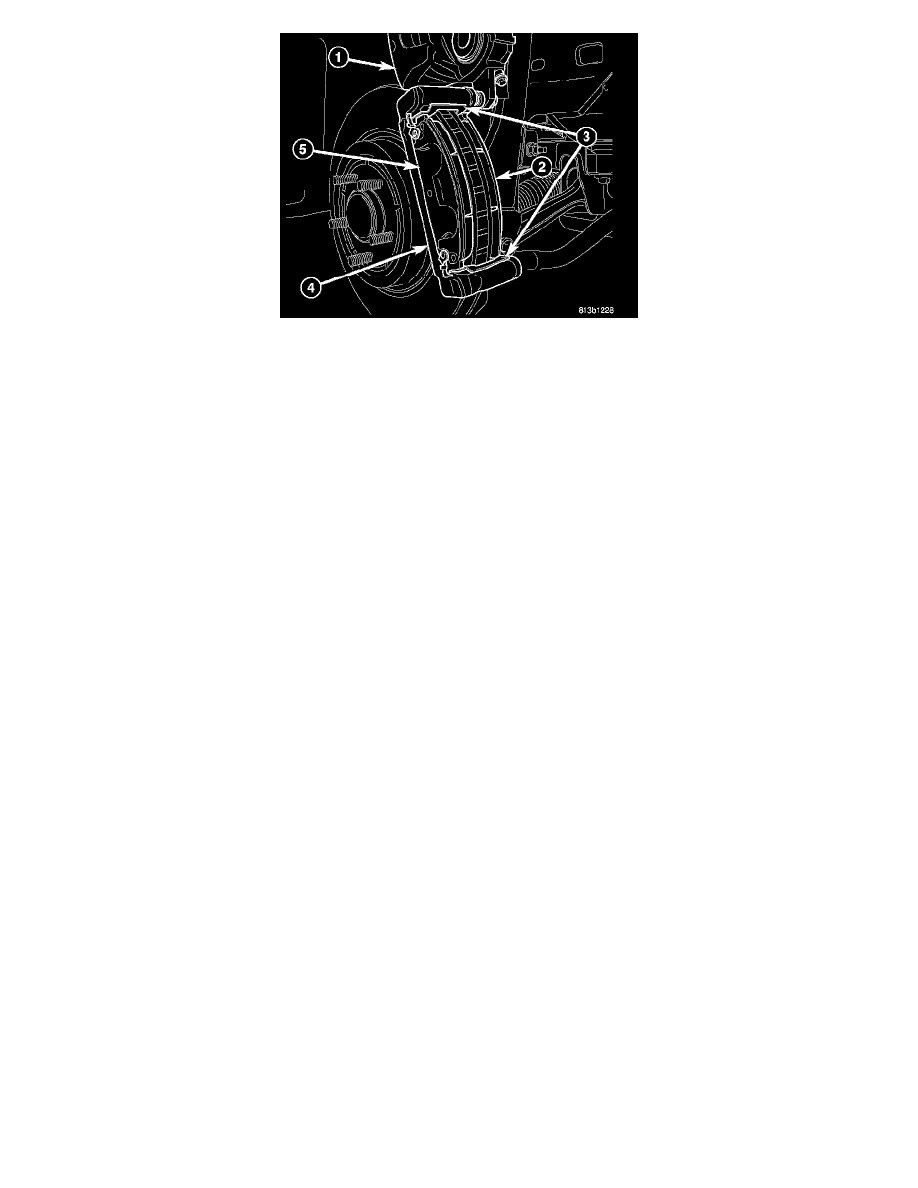Magnum V6-3.5L VIN V (2006)

4. Rotate caliper upward (1), exposing brake pads (2 and 5). Use care not to overextend brake hose when doing this or damage may occur.
5. Remove inboard (2) and outboard (5) brake pads from caliper adapter (4).
6. If necessary, remove anti-rattle clips (3) from upper and lower abutments of adapter (4).
CLEANING
WARNING: Dust and dirt accumulating on brake parts during normal use may contain asbestos fibers from production or aftermarket
brake linings. Breathing excessive concentrations of asbestos fibers can cause serious bodily harm. Exercise care when servicing brake parts.
Do not sand or grind brake lining unless equipment used is designed to contain the dust residue. Do not clean brake parts with compressed
air or by dry brushing. Cleaning should be done by dampening the brake components with a fine mist of water, then wiping the brake
components clean with a dampened cloth. Dispose of cloth and all residue containing asbestos fibers in an impermeable container with the
appropriate label. Follow practices prescribed by the occupational Safety And Health Administration (OSHA) and the Environmental
Protection Agency (EPA) for the handling, processing, and disposing of dust or debris that may contain asbestos fibers.
INSPECTION
Visually inspect brake pads for uneven lining wear. Also inspect for excessive lining deterioration. Check the clearance between the tips of the wear
indicators (if equipped) on the pads and the brake rotors.
If a visual inspection does not adequately determine the condition of the lining, remove the disc brake pads from the calipers and perform a physical
check.
NOTE: It is important to inspect both front and rear brake pads during the same inspection. Typically, front and rear brake pads wear out at the same
time.
When servicing, replace both disc brake pads (inboard and outboard) for each caliper. It is necessary to replace the pads on the opposite side of the
vehicle as well as the pads failing inspection.
If the brake pads do not require replacement, be sure to reinstall the brake pads in the original position they were removed from.
INSTALLATION
NOTE: Perform steps 1 through 7 on each side of the vehicle.
1. Completely retract caliper piston(s) back into bore(s) of caliper. To do so:
a. Remove fluid reservoir cap.
b. Use hand pressure or a C-clamp may be used to retract piston, first placing a wood block over piston(s) before installing C-clamp to avoid
damaging piston(s).
c. Install fluid reservoir cap.
